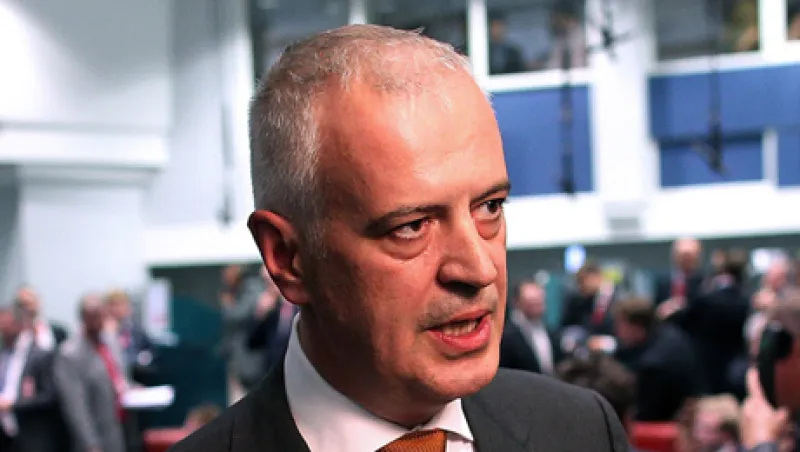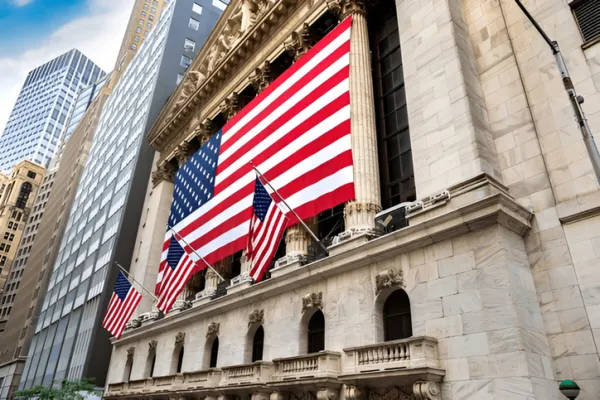When the London Metal Exchange confirmed last September that its members and shareholders were willing to consider takeover bids, CEO Martin Abbott wasn’t expecting to be inundated with offers. Within weeks, however, more than a dozen potential buyers — a group that includes the CME Group, IntercontinentialExchange and a joint bid by the London Stock Exchange Group and Singapore Exchange, according to industry analysts — had expressed interest in acquiring the business, which is the world’s largest trading platform for nonferrous metals.
Now, five months later, the LME’s board of directors is poised to decide the exchange’s fate. On February 23 it will meet to consider initial bids for the LME, which recently reported record annual trade volumes — volumes that rose 21.9 percent year over year to 146.6 million lots in 2011. The exchange also posted record trade value in 2011, which increased by 32.8 percent year over year to $15.4 trillion. If the board approves a takeover, the coming sale will mark the end of an era for the LME, which was founded 135 years ago above a London hat shop and has fiercely guarded its autonomy ever since.
In anticipation of a potential sale, Abbott agreed to speak to Institutional Investor’s London Bureau Chief, Loch Adamson, about the prospect of a deal and the LME’s competitive strategy as the global market for nonferrous metals expands.
1. How likely is the LME to agree to a deal?
The line we’ve taken throughout this process is that the LME is not necessarily for sale — we never put the For Sale sign up. We received an unsolicited approach and thought it would be sensible to find out what other interest might exist. So the day before the first expression of interest arrived, we had no pressing need to sell the exchange, and the day after, nothing had changed. We are not in a position of having to sell. So it is really up to the would-be buyers to show the shareholders that they can provide a compelling reason for us to sell. But it is quite possible that when all is done and dusted, the shareholders will say, "Well that is all very interesting, but actually we like it the way it is — and we’ll stay independent."
2. You announced in December that you’re planning to create your own clearinghouse — why is it important to the LME to have that control?
We feel that the advantages fall into two broad areas: The first reason is strategic, because we would like to have as much management control as possible over the way our clearing is handled. We’d like to know that our clearing is stable in its ownership and noncompetitive — competitive to us, that is. Second, we feel that it should be possible for our members and shareholders to get more of the economic benefit. The fees themselves are not terribly high, but the revenues that accrue as a result of treasury management on collateral are potentially very large. So if you put those two things together, the strategic objectives and the revenue objectives, one can make a reasonably powerful case for using a vertical trading and clearing model.
3. The LME’s trade volumes have risen dramatically over the past year — what are the drivers?
The record volumes stem from a combination of factors. We have seen a lot of algorithmic trading and some high frequency trading coming into our electronic system, but we have also seen increased professional investor interest in the exchange because commodities have become firmly established as an asset class. We’ve also seen volumes driven by the core business itself — the trade and industrials business. And if you look at underlying markets, we’ve seen tremendous growth out of Asia, primarily driven by China, and rising demand for metals. The dislocation between supply and demand has created greater volatility in prices. And more volatility means greater risk and therefore more participation from the core users of the market. So we have actually seen a number of different strands come together to drive those record volumes.
4. How defensible is your business in a globalizing industry?
The majority of our business derives from outside the European Union so we’re not worried about cross-border competition within the EU. We’re a global market that just happens to be in London; we’re not regional. But we do look at the global situation. Currently we have well over 90 percent of the global market share in our products ex-China. China is a parallel universe. While there is a large futures market in Shanghai, it is ring-fenced — the majority of Chinese are not allowed to trade outside China, and the majority of non-Chinese are not allowed to trade inside China — so we set that market aside when calculating our market share. With such a large global percentage, however, we’re not feeling much pressure from a competitive perspective, but we’re always aware that this is our market to lose. Regulation can have an impact on competition too, and given our market share we have to be vigilant. We don’t want to fall prey to local regulation that destroys our global position.
5. If the board does decide to go forward and entertain bids later this month, what does the deal timeline look like?
If there is anything that the board wishes to take forward, we will move into round two. And my guess is that we would not reach the end of that process and boil it down to a single offer until March or possibly even April. If the board were to recommend something to our shareholders, my view is that it is going to be the middle of the year before we put anything to the shareholders for a vote. In the meantime, we’re taking a business-as-usual approach, which is why we’re going to be proceeding with developing our own clearing strategy.






